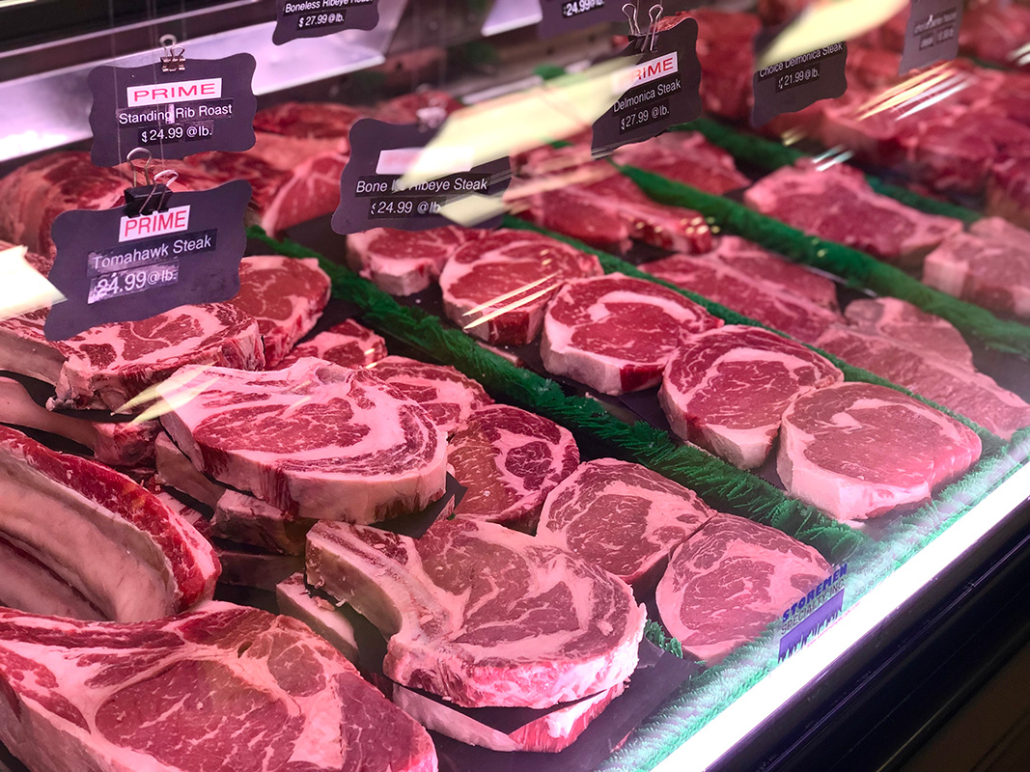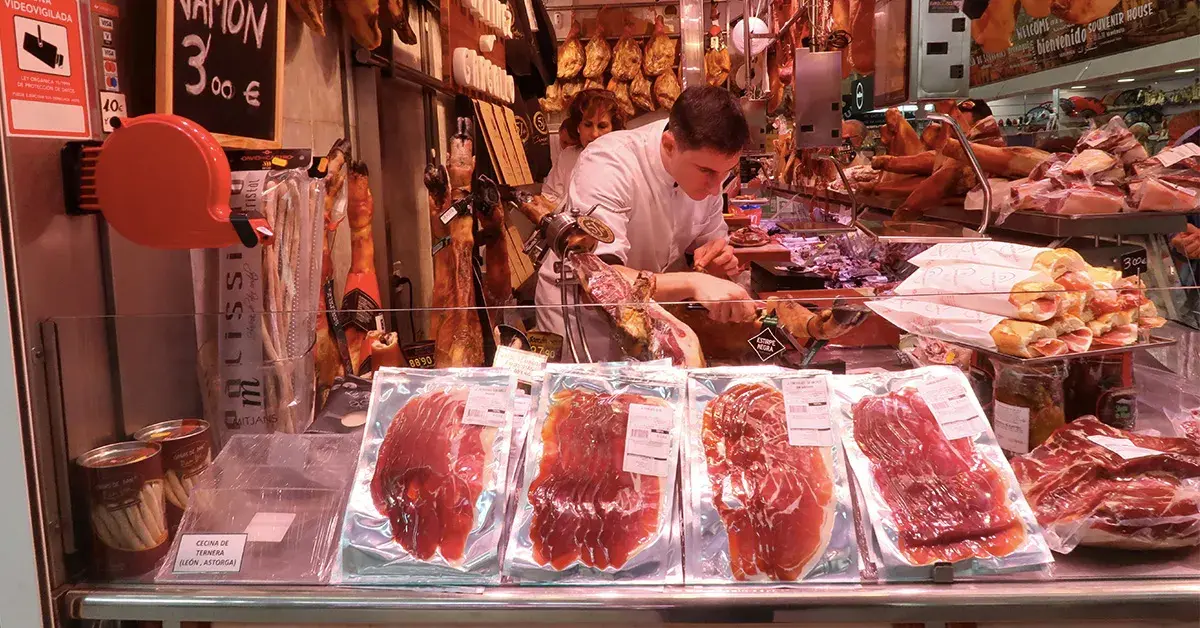Reveal the Art of the Butcher's Cut in a Modern Meat Market
In the ever-evolving landscape of contemporary meat markets, the butcher's cut has actually transcended its conventional roots, merging age-old craftsmanship with modern techniques. bagley farms meat market edwardsville il. Today's butchers are not just processors of meat; they are experienced craftsmens that stress sustainability and moral sourcing. Their experience in choose and preparing cuts customized to certain cooking requirements provides an unmatched dining experience. What truly establishes the contemporary butcher apart is their ability to build a deeper connection in between consumers and the beginnings of their meat. Just how do these masters balance practice with development, and what ramifications does this have for the future of meat intake?
Advancement of Butchery Methods

The mid-20th century saw butchery methods even more improved by clinical understandings into muscle biology and meat aging, improving both inflammation and preference. Developments like vacuum cleaner product packaging and refrigeration prolonged product shelf-life, permitting butchers to diversify offerings and boost high quality control. This duration likewise noted the increase of specialized equipment, such as band saws and meat slicers, which increased accuracy and performance in meat processing.
The 21st century has introduced electronic innovation into the butchery world. Electronic systems now aid in tracking pet provenance and optimizing cuts to fulfill details customer choices. In addition, a renewal in artisanal butchery has emerged, mixing typical skills with modern knowledge to cater to consumers seeking ethical and sustainable meat alternatives. This development emphasizes a dynamic interplay between custom and development, meeting contemporary demands while preserving the craft's heritage.

Understanding Meat Cuts

Comprehending the complexities of meat cuts is crucial for both butchers and consumers looking for high quality and value. For butchers, accurate cuts reflect ability and regard for the craft, guaranteeing marginal waste and optimum return.
The key categories of meat cuts include primal, sub-primal, and retail cuts. Butchers after that break these down better right into sub-primal cuts, prior to ultimately creating retail cuts readily available to customers, like ribeye or tenderloin.
Understanding muscle make-up is crucial; muscle mass used more often by the animal have a tendency to be harder and are best matched for slow-moving food preparation approaches, while less-used muscular tissues, like those discovered in the loin, are a lot more tender and perfect for cooking or roasting. Familiarity with these distinctions equips consumers to make informed selections, enhancing their cooking endeavors.
Choosing High Quality Meat
Choosing the ideal meat includes even more than simply picking a visually attractive piece from the display screen. The art of choosing high quality meat calls for a discerning eye and understanding of certain features that signify quality and excellence. First of all, take notice of the color; beef must have a bright, cherry-red shade, while lamb should show a soft pink tone, and pork a pale pink. This suggests the meat is fresh and hasn't been exposed to oxygen for as well long.
Secondly, think about the marbling, which refers to the white streaks of fat within the muscular tissue. Appropriate marbling is an essential indicator of inflammation and flavor, as it thaws during cooking, improving the meat's juiciness. Keep in mind, higher marbling frequently correlates with exceptional high quality cuts, such as USDA Prime.
Structure is one more vital variable; meat ought to really feel strong to the touch, not slimed or overly soft. Furthermore, be conscious of the aroma. Fresh meat should have a clean, neutral odor, without any kind of sour or repulsive smells.
Combining Cuts With Food Preparation Methods
Efficiently combining cuts of meat with the appropriate cooking techniques is essential for attaining ideal taste and texture. Different cuts differ in inflammation, marbling, and connective cells content, each calling for particular methods to open their capacity. Tender cuts like filet mignon and ribeye, with their inherent marbling, benefit from high-heat, quick-cooking methods such as grilling or pan-searing. These approaches enhance the meat's natural flavors and make sure a juicy coating.
Conversely, tougher cuts like brisket and chuck roast are rich in collagen, which damages down into gelatin when prepared gradually. These cuts are excellent for braising or slow-moving roasting, allowing the meat to soften in time and create deep, intricate flavors. Cuts such as short ribs and pork shoulder fare well with slow-cooking methods, where prolonged cooking times change their durable our website textures right into succulent dishes.
Lamb shanks and oxtail, which need long term food preparation to tenderize, are best candidates for stewing or slow simmering. These approaches coax out rich, hearty tastes while preserving dampness. By understanding the unique characteristics of each cut, chefs and home cooks alike can boost their culinary creations, making certain each recipe is both pleasing and unforgettable.
The Butcher's Duty Today
Browsing the evolving landscape of the modern-day meat market, the butcher's function today prolongs past plain prep work of cuts. Contemporary butchers are cooking artisans, teachers, and advocates for lasting methods. They link the space in between the ranch and the fork by making sure moral sourcing, understanding pet husbandry, and prioritizing openness in the supply chain. This change shows the expanding customer need description for top quality over quantity, where provenance and animal well-being are paramount.
In addition to crafting exact cuts, butchers now involve directly with consumers, supplying cooking guidance and tailoring selections to match specific demands and preferences. Their know-how in meat aging, marbling, and flavor accounts empowers consumers to make informed decisions, improving their culinary experiences. This customized service exemplifies the butcher's developing duty as a relied on expert in the cooking area.
Furthermore, butchers are essential in reducing waste, utilizing entire animals to develop varied items such as sausages and stocks - bagley farms meat market edwardsville il. This thorough technique not only appreciates the animal but also straightens with modern sustainability objectives. In this method, the modern-day butcher symbolizes both tradition and advancement, adapting to an ever-changing market while maintaining the creativity and honesty of their craft

Verdict
Mastery in understanding diverse meat cuts and quality indications empowers butchers to offer informed referrals, aligning details cuts with optimum cooking approaches. By honoring historic techniques while embracing contemporary demands, the butcher's role continues to be vital in today's sophisticated learn the facts here now meat market.